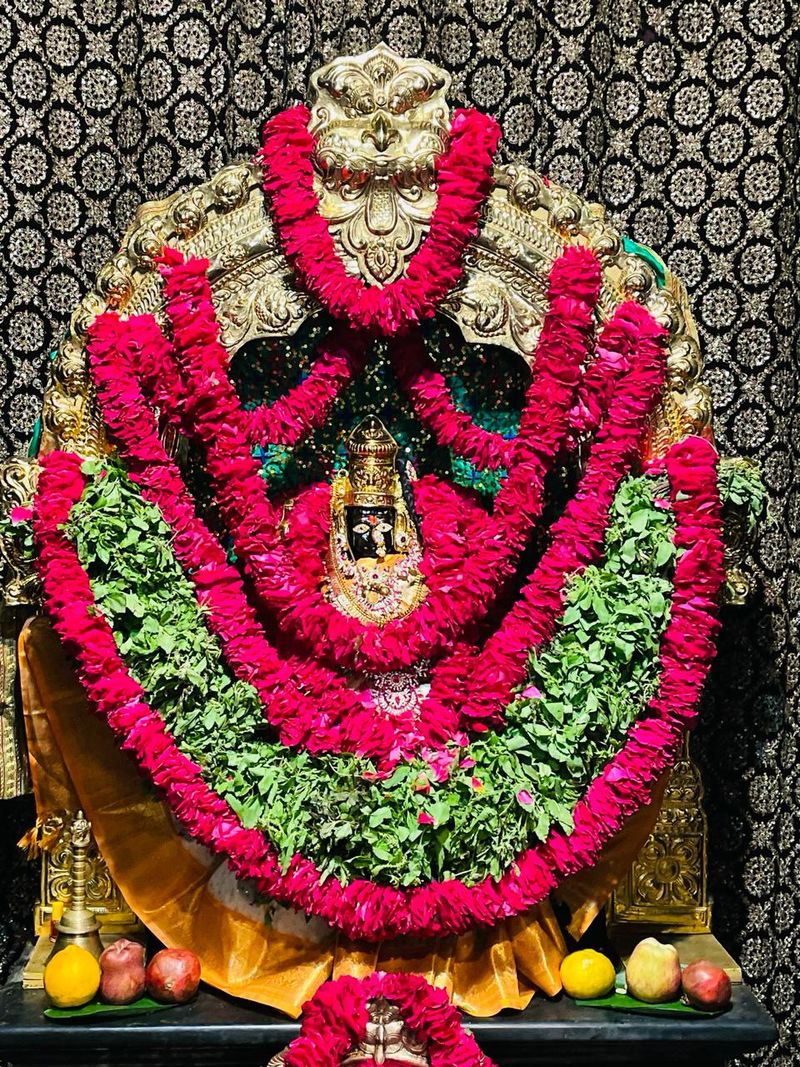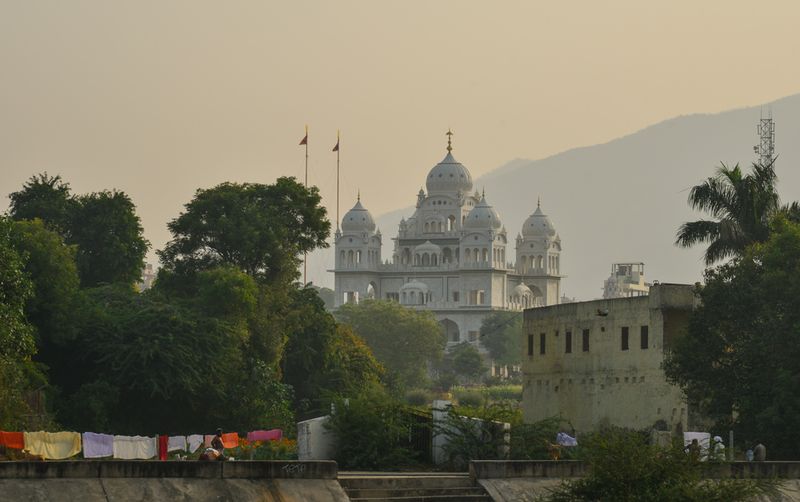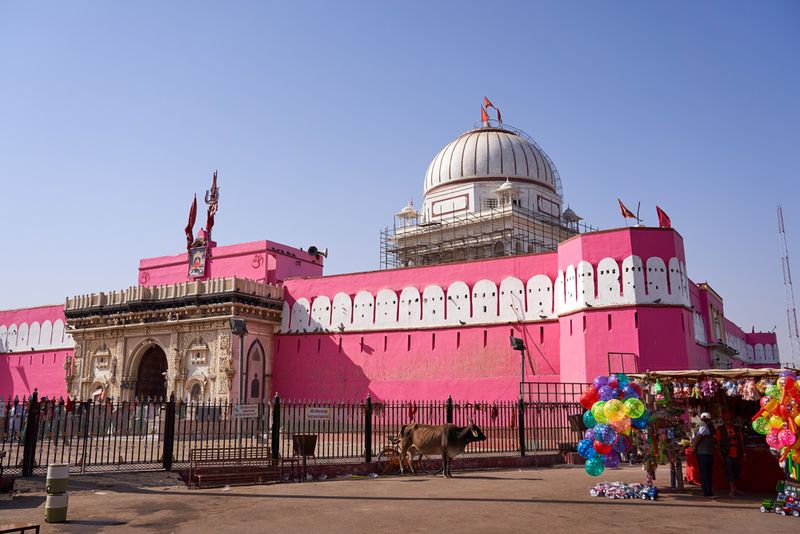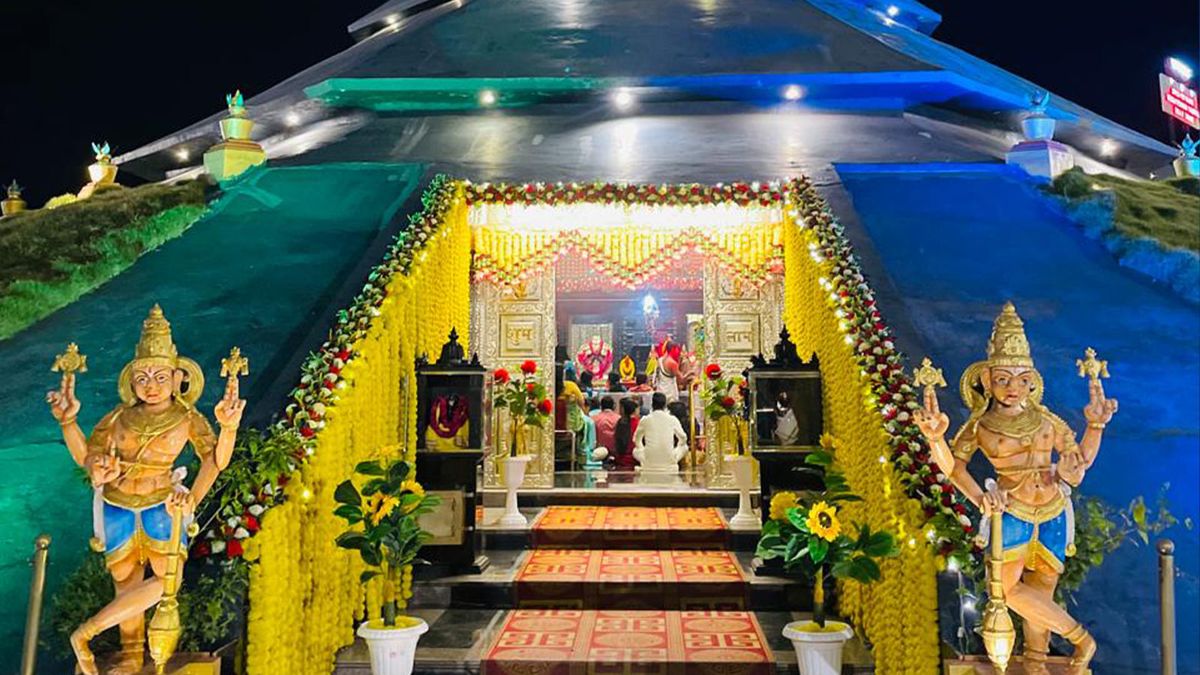Marching armies, royal emblems, imposing doorways and delicate jharokhas. Those are the first images that flash in front of our eyes when we think of the royal state of Rajasthan. Bordering the western frontier of India and serving as a historic bulwark against marauding armies for centuries, some of the imagery is true and natural to the state. But, it’s also true that the state has unique pilgrimage sites that is a testament to the religious, spiritual, devotional dimensions of the proud martial Rajasthani. In fact, one of the greatest exponents of the Bhakti tradition in India who broke many a social convention and is revered as a saint, Meerabai, comes from Rajasthan. Here are some temples in Rajasthan one must not miss:
Tirupati Balaji Sri Venkateswara Swamy Vaari Temple, Mount Abu
Continuing the tradition of building centres of religious confluence in Rajasthan even in modern times led to the establishment of a grand temple that has its origins down south, in the state of Andhra Pradesh. The Tirupati Balaji Sri Venkateswara Swamy Vaari Temple ‘praan pratiishtha’ was done on October 25, 2021 in the hill station of Mount Abu, Rajasthan under the guidance of the priest from Tirumala, Shri Ramana Dikshitulu.
The unique temple design that is different to the Tirupati monument is an immediate draw while the rituals and practices are conducted under the aegis and auspices of the TTD Trust. Having a ‘Nava graha’ complex, a lotus pond, 12 holy kalash-es and a children’s play area, the temple now draws people from far and wide - even from the neighbouring state of Gujarat which is just an hour away. Built near the 7 Hills of Abu under the patronage of temple manager Somaram Dewasi, the mega construction took over two years of supervision and an army of 600 labourers from Rajasthan, Gujarat, Maharashtra and Andhra Pradesh to achieve its grandeur.

The seven-day grand inauguration ceremony following all religious protocols has imbued this temple with a grace and majesty that now draws people for spiritual solace from across the country. This new temple now draws people from far and wide, even from the neighbouring state of Gujarat which is just an hour away.
Brahma Temple, Pushkar

One of the most famous temples in India that is deeply connected to Hinduism is the Brahma temple in Pushkar. Built in the 14th century CE and renovated by Adi Shankara in the 8th century, this is a must visit destination for the devout Hindu. Also knows as the Jagatpita Brahma Mandir, this temple is located close to the Pushkar Lake in Rajasthan. The Brahma Temple is one of the few existing temples dedicated to Lord Brahma and also happens to be the most important one.
Made from marble and stone slabs, it has a noticeable red shikhara and the motif of a swan. The sanctum sanctorum contains the image of Lord Brahma and his consort Gayatri, who’s also the goddess of the vedas. On Kartik Poornima, a large number of pilgrims, after bathing in the Pushkar lake, visit the temple as part of a festival dedicated to Brahma. Now a vibrant world tourist destination because of the Pushkar fair and epic Holi celebrations, Pushkar’s Brahma temple is gaining prominence for the year-round traveller.
Khatu Shyam Temple, Sikar District

A pilgrimage site dedicated to Lord Krishna and Barbarik — both of whom are often worshipped as family deities — devotees believe that the temple is also the resting place for the real head of Barbarik, a warrior who, on Lord Krishna’s asking, cut off his own head and offered it as guru dakshina during the Kurukshetra. It was Lord Krishna who later gave it the name ‘Shyam’. As far as the story goes, it’s said that Khatu Shyam was bestowed a boon by Lord Krishna in Dwaparyug that he would be worshiped by his name Shyam in Kaliyug. Barbarik’s head was reportedly buried in Khatu Nagar which is now the Sikar district.
The story goes as such: A cow came to that place and was spontaneously giving milk every day. Later, after excavation, Barbarik’s head was revealed, which was handed over to a Brahmin for a few days. At some point, the king of Khatu Nagar was inspired in a dream to build a temple and to adorn that head in the temple. A temple was built at that location and the head was decorated on the Ekadashi of Kartik month, which is celebrated as the birthday of Baba Shyam. The original temple was built in 1027 AD by Roop Singh Chauhan and his wife Narmada Kanwar. Abhay Singh, Diwan of Thakur, the ruler of Marwar, renovated the temple in 1720 AD on the instructions of Thakur.
Karni Mata, Deshnok

One of the most visited temples in Rajasthan is the Karni Mata temple in honour a local warrior Sage and considered an incarnation of Goddess Durga, is situated 30 kms from Bikaner, built in the 16th century CE. Jodhpur and Bikaner kingdoms were formed on her blessings. Multiple royal houses of Rajasthan therefore give patronage to this temple and pay obeisance. This temple is also a great example of co-existence between humans and animals, as lakhs of rats can roam freely on the temple premises and all devotees show extreme care and respect towards them.


